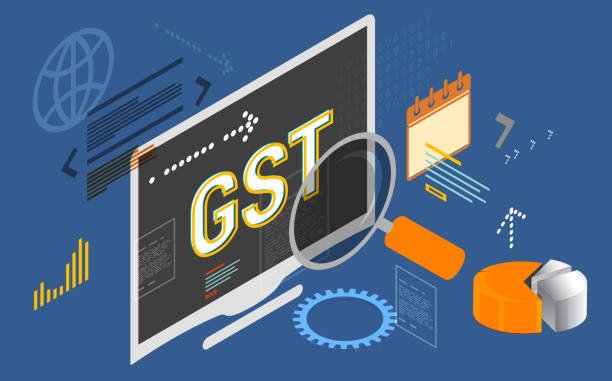A massive Goods and Services Tax (GST) fraud has been uncovered in Chhattisgarh. The scam is worth Rs. 512 crore. It involves fake invoices and shell companies. The Madhya Pradesh Economic Offences Wing (EOW) made a breakthrough. They arrested a coal trader named Zafar Sheikh. This happened in Marwahi, Chhattisgarh, on July 3, 2025. The case has shocked the coal trade industry. It has also raised concerns about tax evasion.
The Scale of the Fraud
The GST fraud is one of the largest in recent times. It involves Rs. 512 crore in fake invoices. Fraudulent Input Tax Credit (ITC) claims amount to Rs. 130 crore. The scam used 23 shell companies. These companies had no real business operations. They generated fake bills to claim tax credits. Over 150 bank accounts were used. These accounts moved fictitious funds. The money was laundered under the guise of coal trading. The scam spread across Madhya Pradesh, Chhattisgarh, and Maharashtra. It has caused huge losses to government revenue.
Key Players Involved
Zafar Sheikh is a key figure in the scam. He was arrested from his home in Marwahi. He worked with Vinod Sahay, the alleged mastermind. Sahay, also known as NK Khare or Neelu Sonkar, was arrested earlier in Ranchi. Sheikh operated two fake firms, Ambar Coal Depot and Anam Traders. These firms were set up under Sahay’s instructions. Another person, Raja Shekh from Bhopal, was also arrested. He ran Mehak Enterprises, involved in fake cement transactions. The trio used fake documents like e-way bills and weight slips. No actual coal or goods were supplied.
***
How the Scam Worked
The fraud was carefully planned. The group created shell companies. These firms had no real operations. They issued fake invoices for coal and cement deals. The invoices showed transactions that never happened. This allowed them to claim GST credits illegally. They used fake challan numbers and truck numbers. They also fabricated e-way bills and weight slips. The fake firms appeared to supply coal to big companies. These included MSP Power, B S Sanjhe Power, and Prakash Industries. In reality, no goods were moved. The scam ran for over a decade, exploiting digital loopholes.
***
Investigation and Arrests
The Madhya Pradesh EOW led the investigation. It started with a case of Rs. 34 crore in fake ITC claims. The probe grew as more evidence was found. The EOW uncovered Rs. 512 crore in fake invoices. They seized computers, fake seals, and forged documents. The investigation traced the scam across three states. Vinod Sahay was arrested in Ranchi on June 28, 2025. Zafar Sheikh was arrested on July 3, 2025, in Chhattisgarh. Raja Shekh was also taken into custody. More arrests are expected as the probe continues. The Enforcement Directorate (ED) is also monitoring the case.
***
Impact on the Coal Industry
The scam has shaken the coal trade. It has exposed weaknesses in the system. Coal traders in Chhattisgarh and Madhya Pradesh are under scrutiny. The fraud has damaged trust in the industry. Legitimate businesses may face stricter regulations. This could increase costs for honest traders. The scam also affects India’s energy sector. Coal is a key resource for power generation. Fraudulent activities can disrupt supply chains. This may lead to higher costs for consumers. The government is losing revenue due to tax evasion. This affects public services and infrastructure projects.
Broader Economic Consequences
The GST fraud has far-reaching effects. It undermines the GST system. GST was introduced to simplify taxes in India. But scams like this show loopholes in enforcement. The government loses billions in revenue. This money could fund schools, hospitals, and roads. The scam also hurts India’s reputation. It may discourage foreign investors. They want a transparent and fair business environment. The fraud has also affected small businesses. They rely on GST credits to manage cash flow. Fake claims disrupt the system and cause delays.
***
Government’s Response
The government is taking action. The EOW is leading the crackdown. They are working with the ED and other agencies. The Group of Ministers (GoM) has flagged GST frauds worth Rs. 2 lakh crore. They are pushing for better coordination between states and the Centre. Only Rs. 3,107 crore has been recovered so far. The government is also tightening GST rules. They are using technology to track transactions. This includes e-way bills and digital audits. These steps aim to close loopholes and prevent future scams.
***
Challenges in Fighting GST Fraud
Fighting GST fraud is not easy. Scammers use complex networks. They operate across multiple states. This makes tracking difficult. Shell companies are hard to detect. They often use stolen identities. For example, villagers’ IDs were misused in this scam. Technology helps, but it also creates new risks. Digital loopholes allow fraudsters to hide their tracks. The government needs more resources. This includes trained investigators and better systems. Public awareness is also key. People must report suspicious activities.
| Case Type | GST Fraud involving bogus coal transactions |
| Fraud Amount | Rs. 512 crore |
| Prime Accused | Zafar Sheikh (arrested from Marwahi, Chhattisgarh); Vinod Kumar Sahay (earlier arrested from Ranchi) |
| Investigating Agency | Madhya Pradesh Economic Offences Wing (EOW) |
| Location of Arrest | Marwahi, Chhattisgarh |
| Raiding Team | 7-member EOW team from Bhopal |
| Modus Operandi | Fake invoices, shell companies, no actual coal supply, fake transportation logs |
| Scale of Operations | Over 23 shell companies and 150 bank accounts used for fake transactions and money laundering |
| States Involved | Madhya Pradesh, Chhattisgarh, Maharashtra |
| Further Investigation | Enforcement Directorate (ED) likely to join; probe expanding to political links and more coal traders |
***





